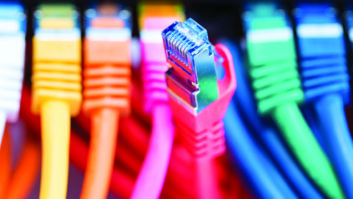Layer 2 Switches in Detail
Aug 1, 2012 1:20 AM, By Doug Irwin, CPBE DRB AMD
Every radio station has at least one Layer 2 (Ethernet) switch nowadays. They seem like the ideal device: You take one of out of the box, connect a bunch of cables, and it magically starts working. You don’t even have to configure it – or do you? Our topic this month (and next) is basically what you should know about Layer 2 switches.
I noticed fairly early on that these Layer 2 switches could become a single-point-of-failure, especially when it came to automation systems. Here we have all the connections between client workstations, and a server, going through this device. What if the power supply fails? Or, what happens if it just stops working, as magically as it started? The answer I always got was, “Just keep one on the shelf – if the first one dies, plug this one in.” I’ll admit, this has never happened to me; but if it did, could I just grab any old switch, and throw it in place of the dead one? Without knowing how to peer in to the switch itself, the answer is a big fat maybe. Let’s look at a few items so we can be sure this on-the-shelf switch is indeed ready to go.

Cisco 3560 switch
If you take a switch out of the box for the first time, just plug it in, and start connecting its ports to various hosts (in this case either workstations or other devices that just happen to communicate via Ethernet) it will start working as you expect. It will have a default configuration, and the MAC address table will be empty. As it starts receiving frames on its various inputs, it adds entries to that table; before you know it, the switch has identified all the connections (in terms of the MAC addresses of the connected devices) and it allows them all to communicate with one another.
But maybe you don’t have the luxury of having a new switch, sitting in box, never before used. Maybe you have to grab one from somewhere else. You slap it in the rack, make the connections – and voila. Some of the ports seem to work – and some don’t. Now what do you do?
To be prepared for this scenario, you need to know a few things about any switch you grab from some other duty. These things also apply to switches you buy second-hand. (Used Layer 2 managed switches are a dime-a-dozen on eBay after all.) These things are:
� Are the ports configured for access, or as trunks?
� Are the ports configured as full or half-duplex, and at what speed (generally 10 or 100Mb/s)?
� Is there more than one VLAN configured in this switch, and if so, which ports are assigned to which VLANs?
These configurations are remembered by the switch in its non-volatile memory; so a switch that’s sitting around may have a configuration that was used years ago, but has no relevance whatsoever in the present. Those configs can keep it from working as you would expect though.
It’s beyond the scope of this article to describe a procedure by which you make these changes in the configuration of a switch. If you already know how, great; if not, get help from your IT colleagues. Keeping a Layer 2 switch on the shelf and ready is certainly good engineering practice.
Irwin is transmission systems supervisor for Clear Channel NYC and chief engineer of WKTU, New York. Contact him at [email protected].
We need your tips
Tech tips may be suitable to earn SBE recertification credits. Send your tips to [email protected].
August 2012
ESPN Radio broadcasts the All Star Game, the latest in program distribution, portable PAs, and Field Reports on Adobe Audition CS6 and the RDL HR-MCP2….









